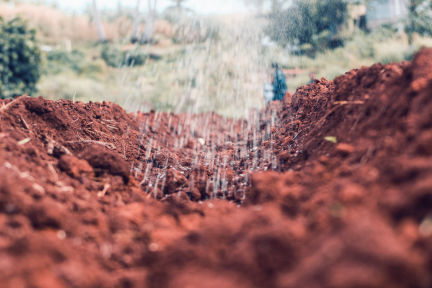
Application of Blend A fertilizer
The components of integrated nutrient management include:
►Considerate use of chemical fertilizers
►Organic manures
►Green manures
►Compost
►Crop residues
►Biofertilizers
More ↓
Soil fertility and plant nutrition refers to the management of soil essential elements for plant growth. Soil fertility is defined as a soil's ability to function within ecosystem and land use boundaries in order to maintain biological productivity, protect the environment, and promote plant and animal health. Essential elements are those which is required for plant metabolism and to complete the crop growth stages. Generally, plants require 17 elements considered vital for plant growth. Elements are categorized into macro and micronutrients based on the relative abundance in plant tissue. Carbon (C), hydrogen (H), and oxygen (O) are derived from carbon dioxide (CO2) and water (H2O), which are converted to carbohydrates through photosynthesis. Other essential elements include nitrogen (N), potassium (K), phosphorus (P), calcium (Ca), magnesium (Mg), sulfur (S), Copper (Cu), manganese (Mn), iron (Fe), boron (B), nickel (Ni), molybdenum (Mo), chlorine (Cl), and zinc (Zn). Each element has specific roles in the growth of the plant.
These elements are found in soils and taken up by plants for growth. Management of these nutrients in the soil is to avail them in adequate amounts according to plant requirements is a part of soil fertility. Agricultural production focus on managing soil nutrients to provide optimum plant nutrition. High demands of agricultural production led to increase use of synthetic fertilizers for quick release of nutrients to the soils and faster uptake by the plants. Majority of the agricultural production is attributed to synthetic fertilizers. It is estimated that approximately 40-60% of yield is due to N, P and K fertilizers. The figures are estimated to be much higher in the tropics. While the fertilizers enhance agricultural production, majority of applied fertilizer is lost in the environment, ultimately harming the environment. Synthetic fertilizers are costly thus increasing the input cost for production, reduces yield and degrades the soil.
Integrated nutrient management (INM) refers to the maximization of the benefits from all potential sources of organic, inorganic, and biological components in an integrated manner to maintain soil fertility and plant nutrient delivery at an optimal level for sustaining the desired production. The aim of Integrated Nutrient Management (INM) is to integrate the use of natural and man-made soil nutrients to increase crop productivity and preserve soil productivity for future generations. Rather than focusing on nutrition management practices on one crop, INM aims at optimal use of nutrient sources on a cropping-system or crop-rotation basis. This encourages farmers to focus on long-term planning and make greater consideration for environmental impacts. Fertilizer type, application rate, application timing, and application placement all play a role in nutrient management. The four Rs of fertilizer application should be included in proper nutrition management: Apply the appropriate fertilizer at the appropriate rate, at the appropriate time, and in the appropriate location for the crop.
The components of integrated nutrient management include considerate use of chemical fertilizers, organic manures, green manures, compost, crop residues and biofertilizers. This of course does not mean applying all components at once in the field. A considerate careful planning of the INM approach is required to improve the soil and sustain the yield production. It is important to realize the total nutrient requirement of cropping system as a whole. Integration of different sources of nutrients is dependent on the local availability and quantity of the nutrient sources which includes organic, inorganic and biological sources. Investment into INM requires economic input which the farmer needs to provide, with an understanding that the benefits may not be seen immediately. The farmer needs to have adequate knowledge in developing INM to minimize environmental damages.
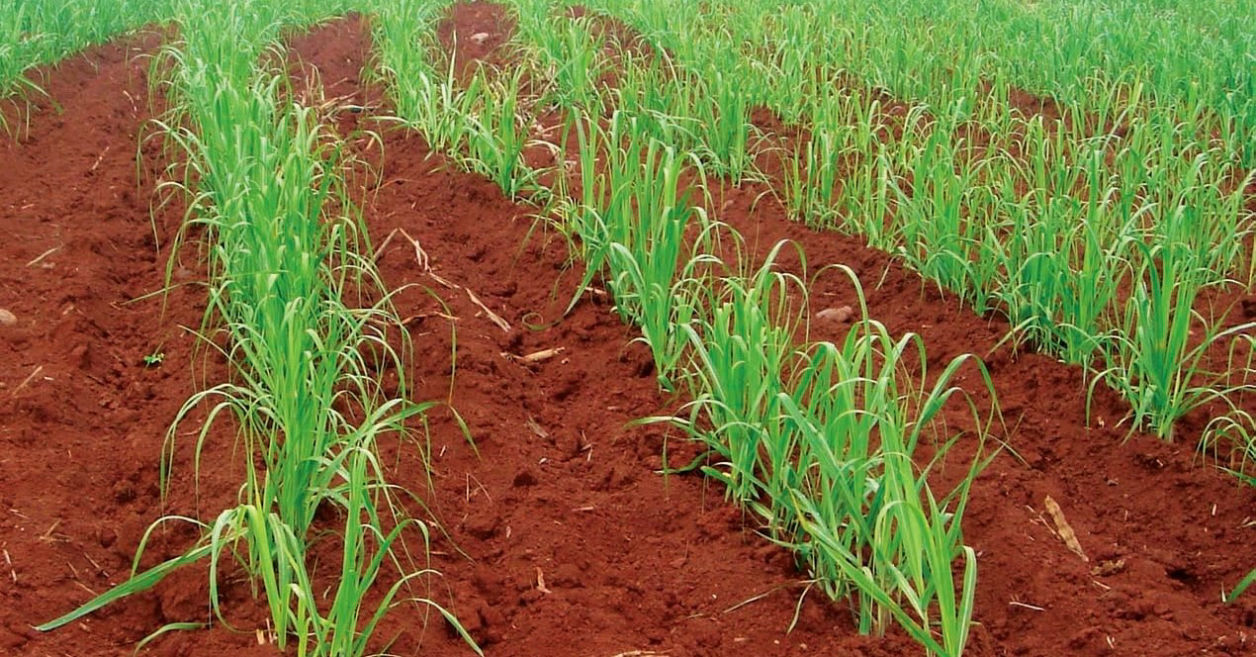
Result of good weed management
The components of integrated weed management include:
►Considerate use of chemicals
→Type of weeds
→Choice and rate of chemicals based on identified weeds
→ Timing of application
►Use of farming implements
►Manual weeding
►Fallowing
►Cover crop
►Trash conservation
More ↓
In practice, weed management strategies should integrate indirect (preventive) methods with direct (cultural and curative) methods. The first category includes any method used before a crop is sown, while the second includes any methods applied during a crop growing cycle. Methods in both categories can influence either weed density (i.e. the number of individuals per unit area) and/or weed development (biomass production and soil cover). However, while indirect methods aim mainly to reduce the numbers of plants emerging in a crop, direct methods also aim to increase crop competitive ability against weeds. Preventive methods include crop rotation, cover crops (when used as green manures or dead mulches), tillage systems, seed bed preparation, soil solarization, management of drainage and irrigation systems and of crop residues. Cultural methods include crop sowing time and spatial arrangement, crop genotype choice, cover crops (when used as living mulches), intercropping, and crop fertilization. Curative methods include any chemical, physical (e.g. mechanical and thermal) and biological methods used for direct weed control in an already established crop. It must be stressed that the effectiveness of any of them can be expected to increase if preventive and cultural methods are concurrently applied.
SRIF is a leading provider of independent analytical services to cane farmers. The analytical laboratory acts as a link between the growers and the industry by providing analytical services for advisory and research programs. This service is essential due to the rising cost of fertilizers and to maintain optimum production in the future. Analytical services provided at SRIF analytical laboratory includes soil, foliar and cane analysis. Soil and leaf samples are received from all sugar cane districts namely Penang, Rarawai, Lautoka and Labasa for fertilizer recommendation and from SRIF research trials.
All analytical procedures are fully documented. The in-house validated analytical methods give consistent and reliable lab reports on the samples. Grower service team has created a detailed sample and report tracking system to assure prompt communication to our growers on lab results and to maintain traceability on samples and reports. All cane farmers planning to plant must have their soils analyzed to get the correct fertilizer recommendation to achieve optimal production.
The SRIF analytical lab tests for total nitrogen, phosphorus, potassium, sodium, calcium and magnesium along with the micro nutrients like copper, iron, manganese and zinc. Results will indicate whether each nutrient is within sufficiency or average ranges. Soil and Leaf samples received by the lab has a turn-around time of 2-6 weeks, from the date the sample is received to the date fertilizer recommendation is dispatched to the respective sectors. The timeline is adhered to so that growers get the results in a timely manner. The analytical services provided to sugarcane growers are free of cost
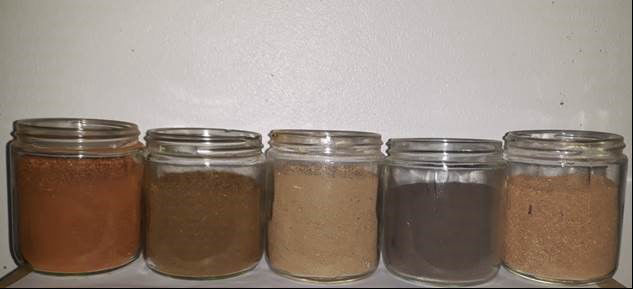
Grinded soil samples stored in bottles for analysis
The SRIF analytical laboratory is well equipped for analyzing soil samples with the use of AAS (together with pH meter and FIA) to determine the different quantities of Nitrogen, Phosphorus and Potassium present in the soil. Based on these results a fertilizer recommendation report is generated containing the recommended quantities or bags and type of NPK blended fertilizer needed by a particular farm. Both the Lautoka and Labasa lab has capacity to analyze and generate fertilizer recommendations for grower needs.
You can get your farm's soil tested by contacting your sector office to collect soil samples that will be sent to SRIF for analysis. Both Viti Levu and Vanua Levu have laboratories for analyzing soil except the Labasa lab analyses basic parameters only such as soil pH.
Soil sampling is an essential component of planting new sugarcane crop as it ensures that germinating sugarcane crop receives the required nutrition for a better crop harvest.
Soil sampling can be carried out by any individual simply by flowing instructions outlined in our factsheet.
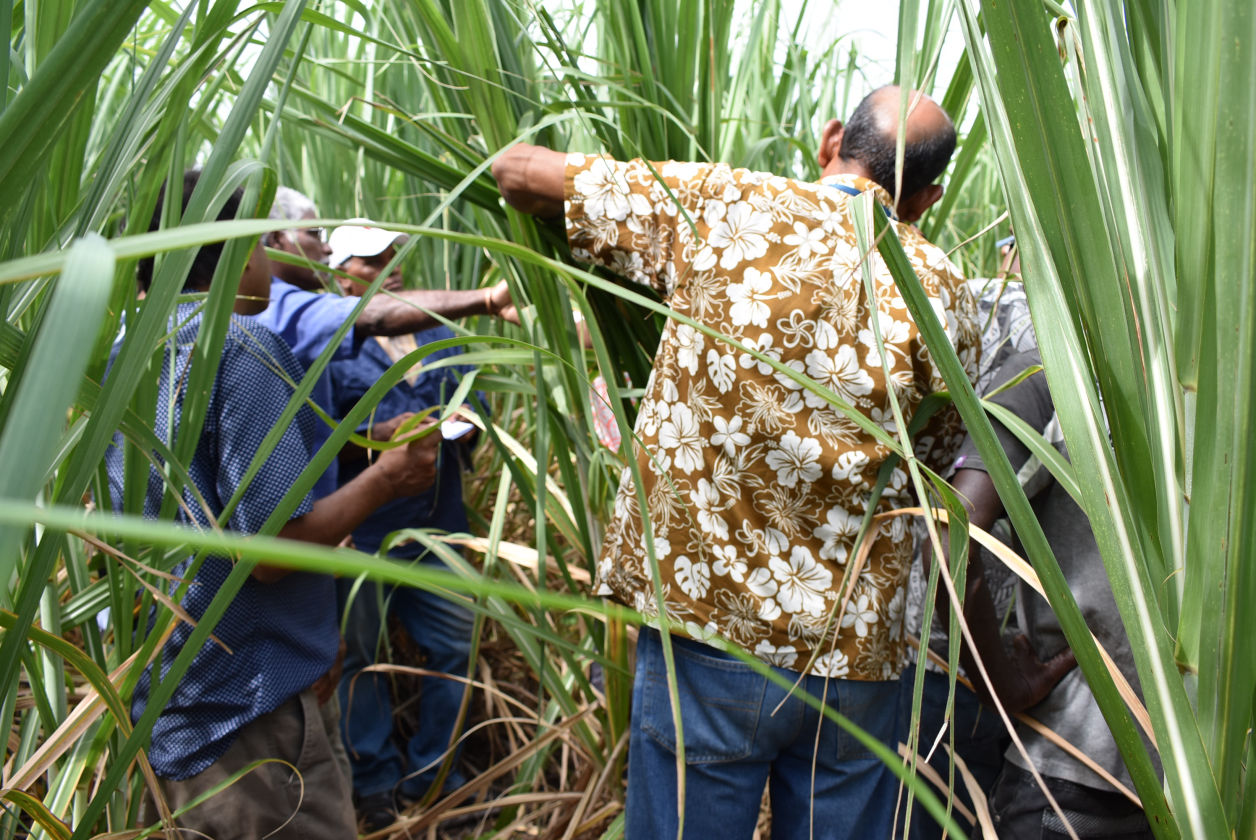
FSC field staff & farmers receiving training on leaf sampling
Leaf analysis is an extremely useful tool for growers. Not only can leaf testing be used to monitor the nutrient status of plants but it can help identify nutrient deficiencies and imbalances. This allows growers to more effectively tailor their nutrient management programs to meet a crop's specific needs.
Leaf sampling is a relatively simple process that any farmer can carry out on their ratoon crop in order to identify nutrient shortage and receive recommended fertilizer type and quantity.
To learn how to carryout leaf sampling, simply download our factsheet and follow the instructions provided.
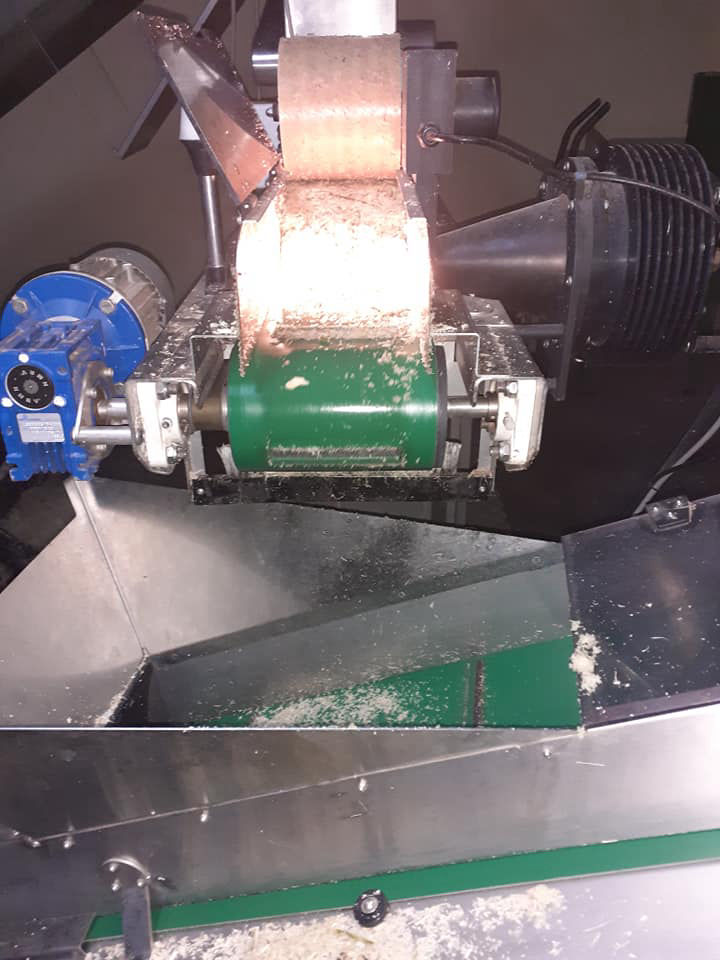
Spectracane in operation - Analyses cane samples using NIR
SRIF has a small mill, an almost equivalent to a large mill but only for reading sugarcane parameters such as purity, sucrose content, fiber content, etc. The small mill is comprised of NIR equipment called the Spectracane that uses near infrared technology to read the biochemical parameters of the sugarcane. The equipment is largely used to test new sugarcane clones as well as existing commercial varieties from research trials.
Free AI Website Builder